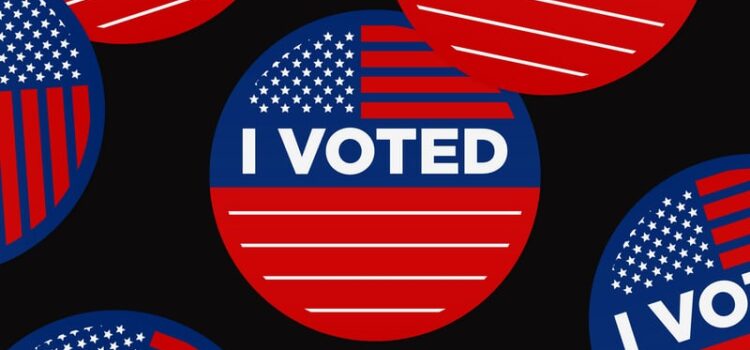

This article is an excerpt from the Shortform book guide to "A Promised Land" by Barack Obama. Shortform has the world's best summaries and analyses of books you should be reading.
Like this article? Sign up for a free trial here .
What happened during the 2010 midterm elections? Did it change the Obama administration and policies?
The 2010 midterms elections occurred halfway through Obama’s first term. As expected, the 2010 midterm elections went poorly for Democrats.
Read more about the 2010 midterm elections and what it meant for the Obama presidency.
The 2010 Midterm Elections
The crisis in the Gulf of Mexico compounded the already-grave political situation for the Obama team in 2010. The midterm elections were set for 2010, and all the polling and anecdotal evidence suggested that it would be a bloodbath for Democrats.
As a general rule, midterm elections tended to go poorly for the party that controlled the presidency. David Axelrod warned the president that this year was likely to be particularly bad, with Democrats having little chance of retaining their House majority and a good chance that they might lose the Senate as well.
The weak economy, the relentless campaign of GOP sabotage, the continuation of seemingly endless wars in Iraq and Afghanistan, and now, the oil spill all combined to create an extremely difficult political climate for incumbent Democrats. Obama recognized that maintaining Democratic control of Congress was crucial if he was to pass the rest of his agenda in his first term.
Barnstorming for Democrats
Coming back to Washington, Obama felt newly energized and ready for the fall midterm campaign. He was proud of everything his administration had achieved in its first two years, and he wanted to take the case directly to voters, believing that hearing directly from the president would cut through the negative partisanship. But this didn’t necessarily mean good news for the 2010 midterm elections.
Obama vigorously campaigned for Democratic House, Senate, gubernatorial, and state legislative candidates across the country throughout September and October 2010. Although he could still draw big crowds and make auditoriums ring with the cheers of “Yes we can!” it was clear that there wasn’t the same sense of passion and urgency among his supporters as there had been two years before.
It was something he’d worried about throughout his presidential campaign—that the enthusiasm his candidacy generated would dissipate once it met the often-dispiriting reality of governing. Although his administration had made major strides, unemployment remained alarmingly high and partisan rancor was worse than ever. To many voters, it felt like Obama hadn’t delivered on what he’d promised.
2010 Midterm Elections: The Shellacking
In what President Obama later termed a “shellacking,” the Democratic Party suffered a major defeat in the elections on November 2, 2010. The party lost a whopping 63 House seats (costing them their majority), seven Senate seats (retaining their majority, but losing the seats they needed to overcome GOP filibusters), six governorships, and 20 state legislative chambers. It was the party’s worst performance in a midterm election since 1938, and it would have significant ramifications for the rest of Obama’s presidency.
Despite the loss, Obama was proud of what his administration had been able to deliver for the American people in such a short period—a rescue of the global economy, restoration of confidence in the nation’s banking system, a serious step toward universal health insurance, and major reform of the finance industry.
Still, the midterm debacle hurt Obama deeply. For all his oratorical and communications skills, he felt he’d failed to rally the nation behind a shared vision and had paid a steep political price for it.
Shuffling the Core Team
In the wake of the loss, it was clear that the administration needed a message, policy and personnel reboot. Key economic advisers like Larry Summers and Christina Romer made their exits in late 2010, as did other members of the senior staff like Press Secretary Robert Gibbs.
The most significant departure was Chief of Staff Rahm Emanuel. After two years as arguably the most powerful person in Washington (other than the president himself) Emanuel was tired and burned out in Washington. Also, with the Democrats’ loss of the majority in the House of Representatives, his relationships with congressional Democrats were less valuable than they had been before.
Besides, Emanuel was preparing for a new challenge—running for Mayor of Chicago in 2011, which had long been his dream job. Despite his tough-guy bravado, Emanuel was emotional when he said his final goodbye to President Obama. He had done much to shape the early years of the Obama administration and played a crucial role in steering key legislation through Congress.
Obama’s choice to replace Emanuel was Bill Daley. Brother of Chicago Mayor Richard Daley, he was known for his relatively non-ideological approach to politics and for his strong relationships with both labor and business. Obama felt that Daley had the right temperament and focus to deal with the new Republican majority in the House.

———End of Preview———
Like what you just read? Read the rest of the world's best book summary and analysis of Barack Obama's "A Promised Land" at Shortform .
Here's what you'll find in our full A Promised Land summary :
- How Barack Obama went from relative obscurity to the first Black president
- What principles guided his political leadership style
- Why Obama retained an unshakable faith in the potential and promise of America






